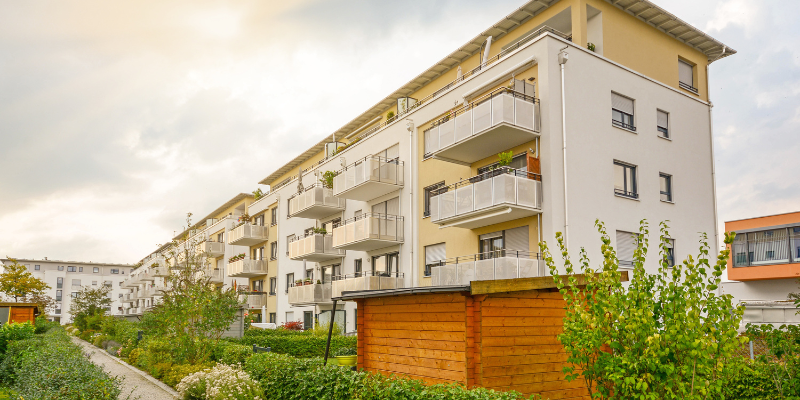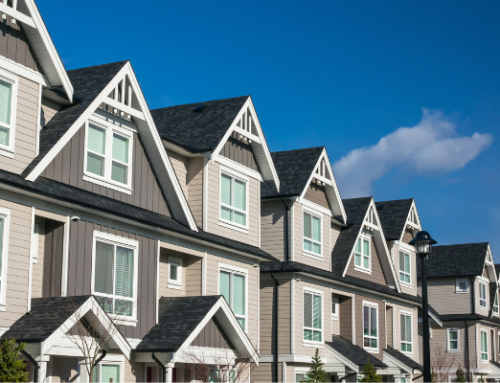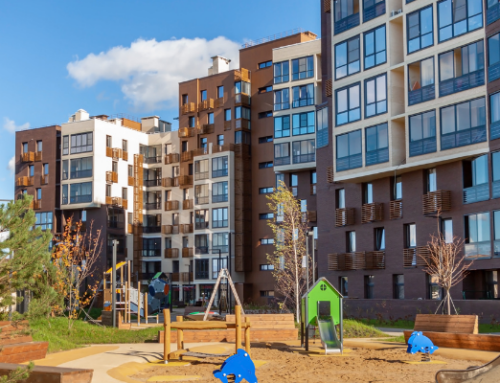Cap Rate Calculator
This cap rate calculator can help you determine your property’s capitalization rate. The cap rate is one way to determine value, but we recommend other considerations for assessing how lucrative an asset is below.
How Do You Calculate the Cap Rate?
The formula is simple:
NOI ÷ Market Value = Cap Rate
The cap rate connects a property’s Net Operating Income (NOI) and market value.
For example, if a property generates $1,000,000 in NOI and is located in a prime A-Class neighborhood, the cap rate will reflect its income potential relative to its high market value. This usually means a compressed cap rate, going as low as 4%. A cap rate can give you a quick sense of a property’s profitability, but it’s important to remember that cap rates don’t tell the whole story.
One common mistake new investors make is assuming that cap rates guarantee returns. Cap rates are just one metric, and relying solely on them can lead to misguided decisions. It’s essential also to consider other return measures, like Cash-on-Cash Returns, the Internal Rate of Return (IRR), and Return on Investment (ROI), which align with your broader investment strategy.
Think of the cap rate as a “North Star”—it provides guidance, but using other tools like compass, maps, and charts (additional return metrics) will give you a more comprehensive view of the investment opportunity.
Also, remember that cap rate calculations don’t include mortgage payments, which we’ll explore further in another post.
Cap Rate Meaning
Building on the earlier point about NOI and market value, a cap rate reflects the relationship between a property’s current Net Operating Income (NOI) and its current market value, providing a snapshot of potential returns.
However, even if a property generates a strong NOI and has a high market value, that doesn’t automatically mean it’s an excellent investment. The key is to use the current market value, not the original purchase price. In real estate, market conditions change rapidly, so relying on old valuations can lead you down the wrong path.
For instance, imagine calculating a property’s value today based on its worth 20 years ago. It wouldn’t give you a clear picture of its true potential.
Similarly, comparing an A-class property (high-end, low-risk) to a C-class property (lower-end, higher-risk) would be like comparing apples to oranges—they have completely different investment profiles.
Cap rate is essentially a “right now” snapshot, offering a quick way to gauge potential returns, similar to how investors compare dividend yields in the stock market. It’s a helpful tool, but properties vary widely in class and location, similarly to stocks, affecting the expected cap rate.
Understanding these differences helps investors make better decisions, especially when comparing properties across A, B, or C-class neighborhoods.
What is a Good Cap Rate?
A cap rate between 4% and 8% is a solid starting point, but context is everything. For instance, an 8% cap rate might look appealing for a tertiary market with higher risk, while a 5% cap rate can also make sense in a busy city center, where stability and lower risk prevail.
One key thing to remember: Cap rates give you a snapshot of the present, not a forecast of the future. Financing options, whether it’s through a mortgage or an all-cash purchase, can significantly impact future returns.
Imagine investing in a sleepy suburban office complex built in the mid-1980s—the market dynamics are very different from a prime downtown property. However, unexpected factors, like a neighborhood becoming a hot spot and NOI skyrocketing, can lead to compressed cap rates down the line—something the initial cap rate doesn’t predict.
It’s like choosing between a tourist trap and a hidden gem. To make the most informed decision, consider hidden gem factors like location, market demand, and economic conditions. Downtown properties may offer higher demand but often come with lower returns initially. Interest rates, market quirks, and Federal Reserve actions can send ripples through the real estate market, impacting cap rates over time.
What is a Good Cap Rate for Multifamily?
A 5% to 8% cap rate is favorable for multifamily properties.
However, there’s no magic number—it depends on your risk tolerance and investment strategy. When considering a good cap rate for you, it’s essential to recognize that it varies based on market, location, and investor goals.
When thinking about cap rates, it’s similar to choosing between different types of vehicles.
A 8% cap rate in a tertiary market might be like driving a rugged SUV—great for handling rough terrain but with a higher risk. Meanwhile, a 5% cap rate in a stable city center might resemble a luxury sedan—steady, reliable, and lower risk. Both vehicles will get you from point A to point B, but your choice depends on how much risk, speed, or comfort you will trade off.
Cap rates give a relative indication of potential returns at a given time. They provide a quick, back-of-the-napkin way to assess a property but aren’t the end-all-be-all for evaluating investments. Other essential metrics—such as Cash on Cash Returns (CoC), Internal Rate of Return (IRR), and Return on Investment (ROI)—can give a more comprehensive picture of an investment’s performance. Ultimately, the right cap rate aligns with your risk tolerance and long-term objectives.
Reverse Cap Rate Calculator
The Reverse Cap Rate Calculator allows you to work backward from your desired return to determine how much you should pay for a property.
For instance, if you target a 7% return, plug that number into the calculator and the property’s estimated Net Operating Income (NOI). The calculator will then show you the maximum price you should pay for that return.
This tool is handy for ensuring that a deal aligns with your financial goals, helping you avoid overpaying for a property. However, remember that the cap rate isn’t the only factor to consider. Metrics like Cash-on-Cash Return and Internal Rate of Return (IRR) provide additional insights into an investment’s potential and can give you a clearer picture of long-term profitability.
Consider these complementary metrics alongside your cap rate target to make the most informed investment decisions.
How to calculate NOI with Cap Rate
The formula to calculate Net Operating Income (NOI) using a cap rate is straightforward:
NOI = Cap Rate × Property Value
This calculation is particularly useful when you already have a target cap rate. Say you aim for a 7% cap rate and know the estimated property value, you can use this formula in reverse. This will reveal what the NOI needs to be for you to meet that target cap rate.
For example, the estimated value is $1MM, and with a 7% cap rate in mind, your target NOI would be $70,000.
This quick calculation allows investors to check whether the numbers align with their desired returns and helps determine if a property’s performance makes sense before making an offer. While it’s a helpful tool, consider other financial factors, such as market conditions, operating expenses, and potential for rent growth, to get the whole picture.
What does a negative cap rate mean?
A negative cap rate occurs when a property’s Net Operating Income (NOI) is negative, meaning its operating expenses exceed its income.
This situation typically arises in distressed properties or areas experiencing economic downturns. For instance, if a property has high vacancy rates, unexpected maintenance costs, or declining rents, its NOI may turn negative.
A negative cap rate signals that the property is losing money and would not generate positive returns in its current state. While a negative cap rate is a red flag, it doesn’t necessarily mean the property is a poor investment long-term. Some investors may see it as an opportunity if they believe they can improve NOI by increasing rents, reducing expenses, or repositioning the asset.
However, purchasing a property with a negative cap rate involves significant risk, as there are no guarantees that the NOI will improve. Investors should perform detailed due diligence, considering the current financials and the potential for market recovery, property improvements, and better management strategies to turn the property’s performance around.
Why is a higher cap rate riskier?
A higher cap rate generally indicates that a property offers higher potential returns but comes with increased risk.
This is because properties with higher cap rates are often located in less desirable markets, have more volatile income streams, or are in poorer condition. For example, a property with an 8% cap rate in a tertiary market likely faces higher vacancy rates, less rental demand, or more maintenance issues than a property with a 5% cap rate in a prime urban area.
Higher cap rates can be riskier due to market fluctuations. Properties in less stable or emerging markets are more susceptible to economic downturns, tenant turnover, and rent instability. Additionally, properties with higher cap rates may have deferred maintenance or structural problems, leading to unforeseen expenses that can further reduce profitability. While higher cap rates are attractive to some investors due to the potential for higher returns, they require careful evaluation. Before committing to such an investment, investors must weigh whether they’re comfortable with the associated risks, such as market volatility, tenant quality, and longer-term maintenance costs.
Can cap rates be lower than interest rates?
Yes, cap rates can be lower than interest rates, though this situation may challenge investors.
When cap rates are lower than interest rates, it indicates that the cost of borrowing is higher than the return on the property. In this scenario, debt-financed investments may become less attractive because the interest payments on the loan exceed the property’s income, leading to negative cash flow.
This can happen in market conditions where property values are inflated—such as prime urban areas with high demand—where investors are willing to accept lower cap rates due to long-term appreciation or stable rental income expectations. However, this means the property will generate lower short-term returns relative to the cost of borrowing.
Investors may need to rely on equity financing or explore other metrics, like IRR or ROI, to justify the investment. While a lower cap rate compared to interest rates can still work in specific cases, such as when future appreciation or rent growth is expected, it often signals that the investment may be less profitable in the short term.





